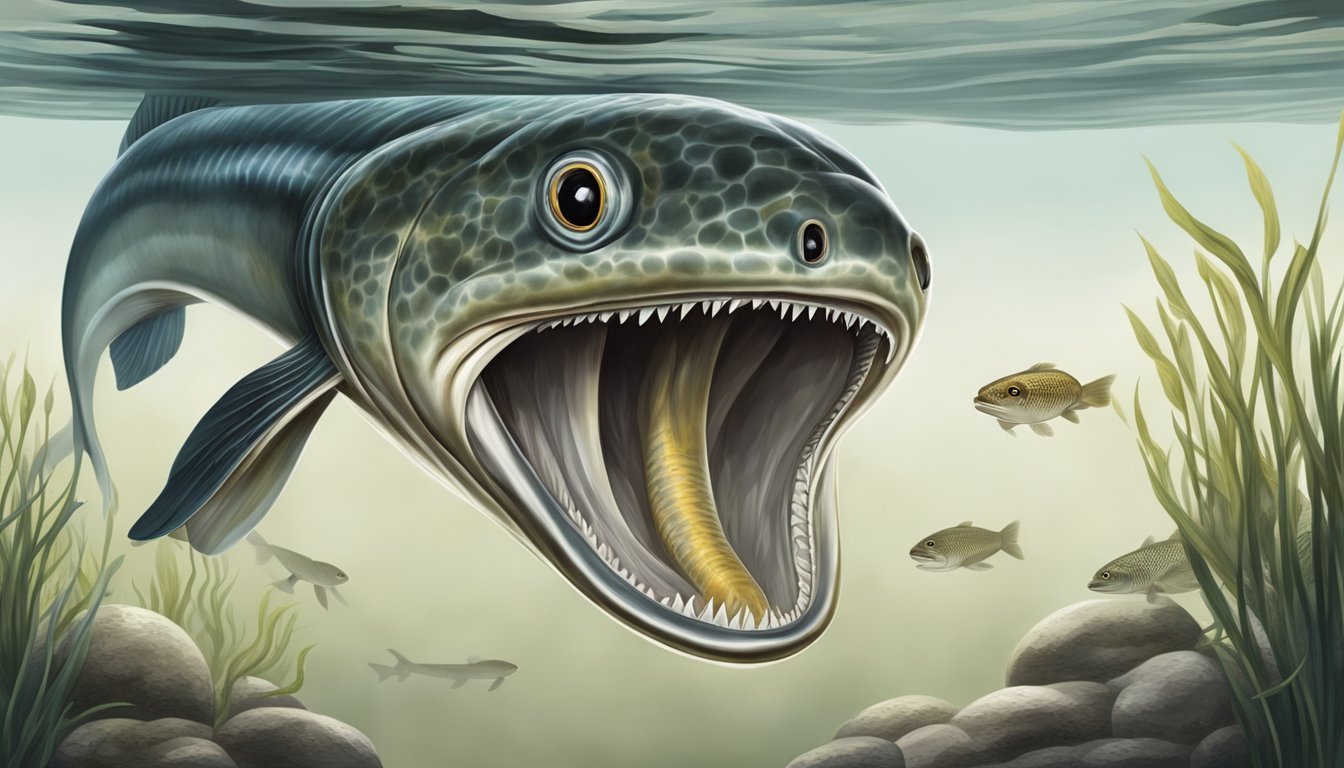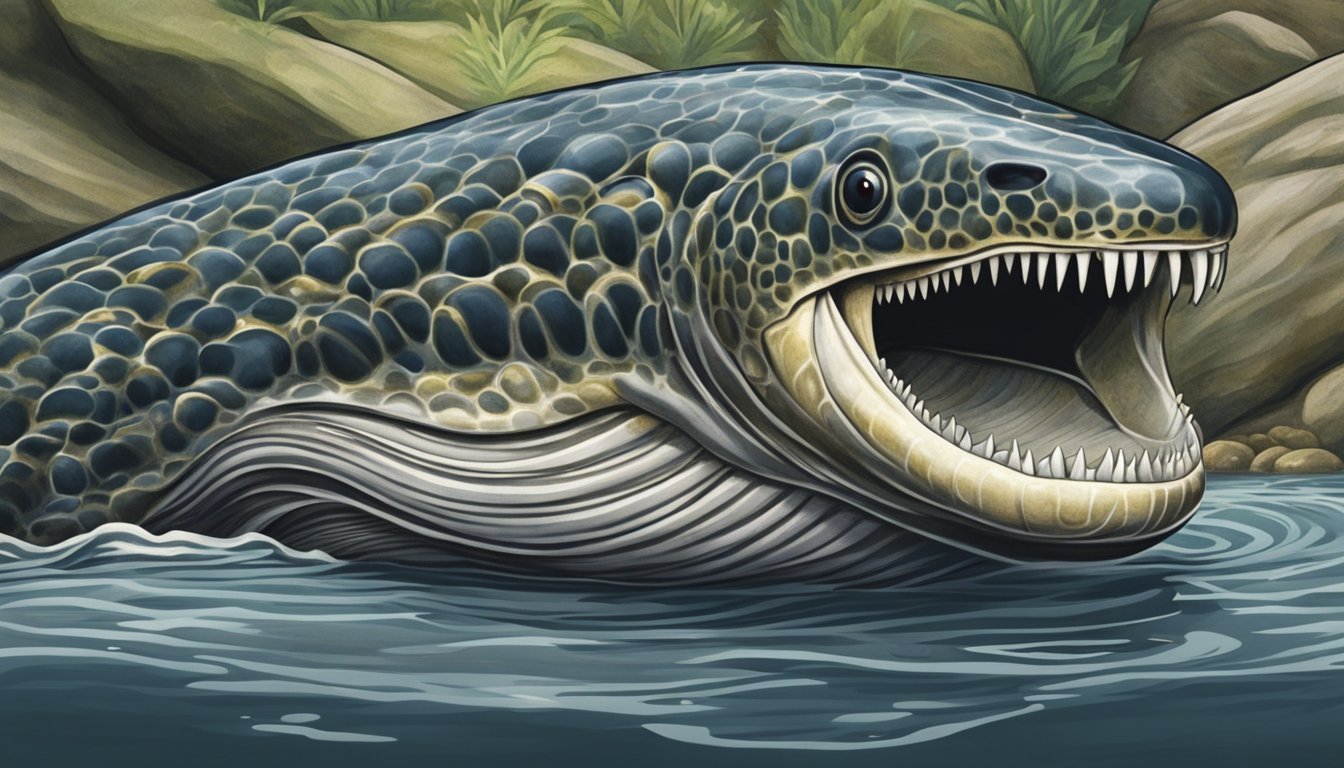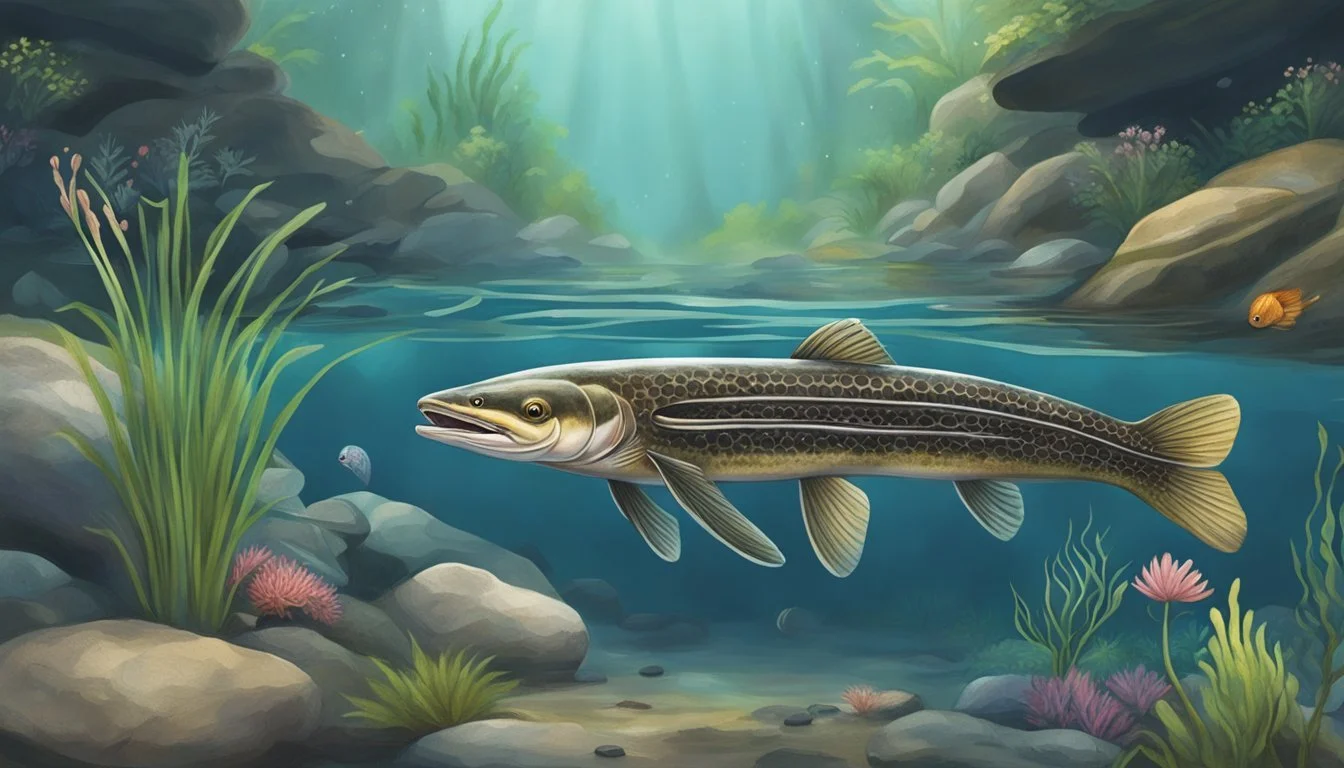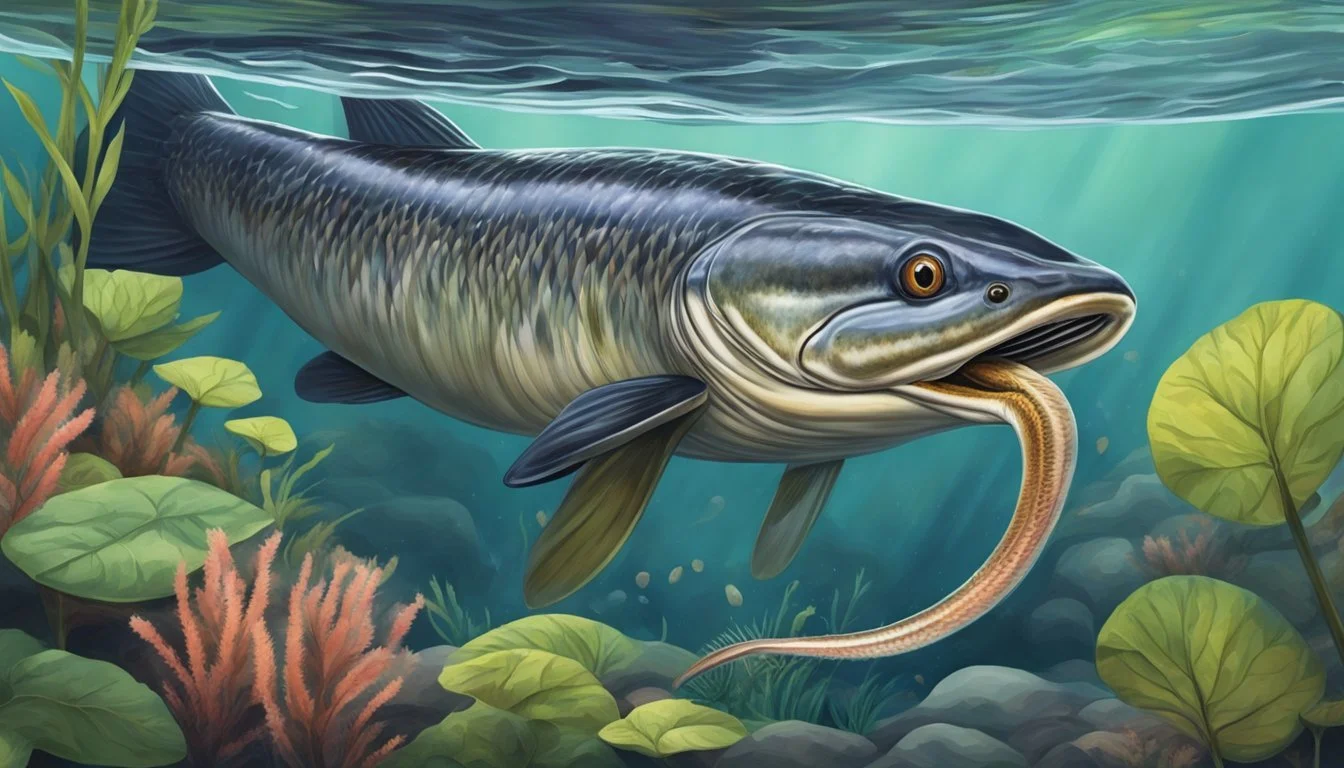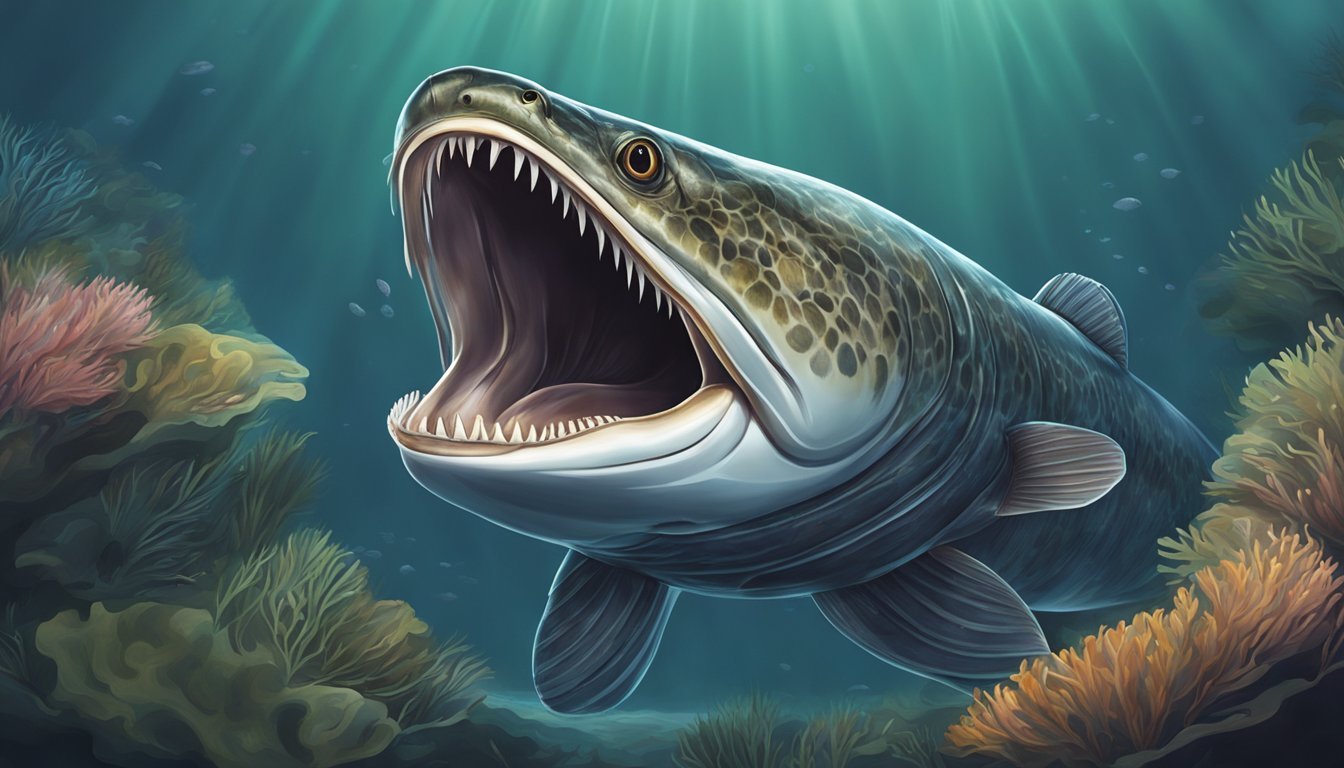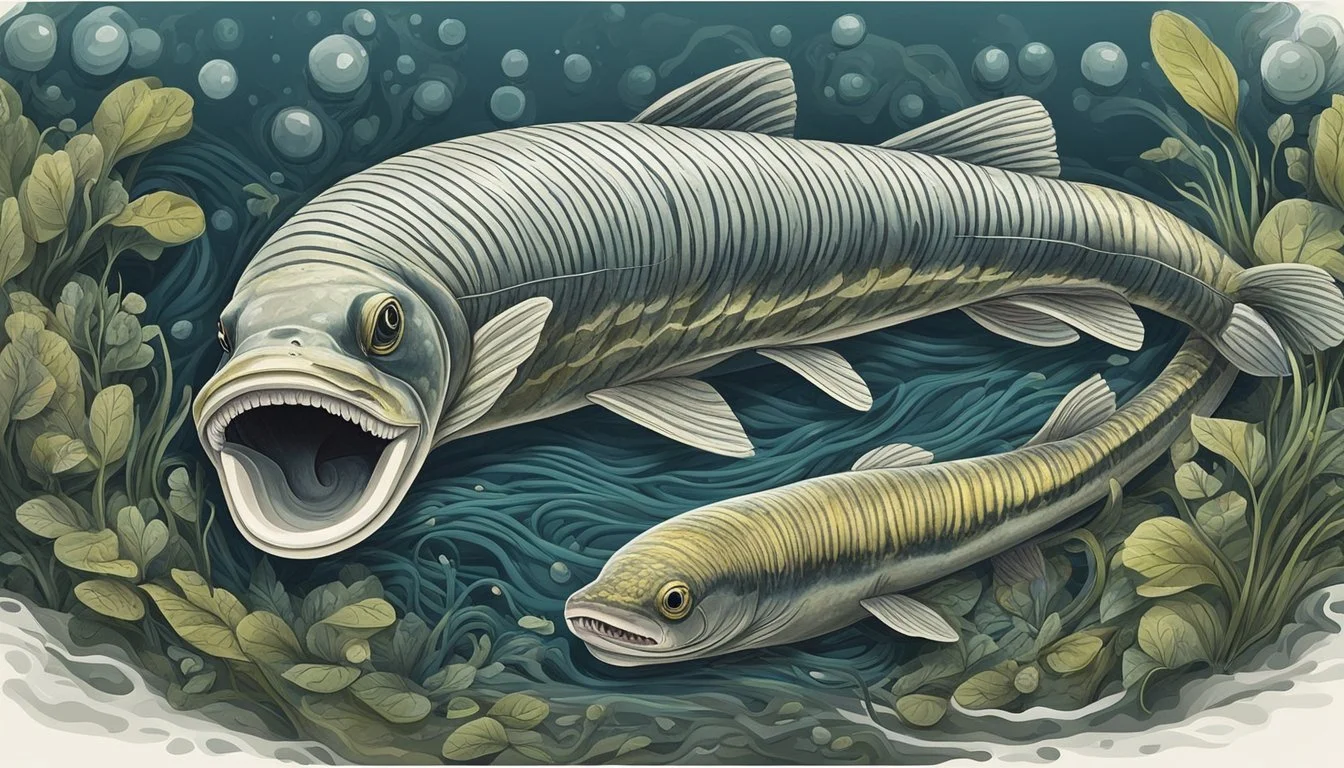Lamprey Unveiling the Culinary Mystique of a Parasitic Fish
Lampreys are a group of jawless fish that have existed for more than 360 million years, predating the dinosaurs and remaining remarkably unchanged throughout eons of evolution. These ancient creatures inhabit both salty seas and freshwater systems, including many European rivers where they are often considered a delicacy. With their snake-like bodies and distinctive tooth-covered, funnel-like mouths, lampreys are uniquely adapted for a parasitic lifestyle, often clinging to other fish to feed on their blood.
The presence of lampreys in European rivers is deeply intertwined with the region's cultural heritage and cuisine. Despite their somewhat unappealing appearance and vampiric habits, lampreys play a significant role in ecosystems and gastronomy alike. The eel-like fish are known for their complex life cycle which begins in the rivers where they hatch. They then migrate to the ocean as juveniles only to return to freshwater as adults, ready to spawn and continue their ancient lineage.
In European rivers, lampreys are much more than mere oddities of nature; they are a seasonal specialty, particularly celebrated in certain areas for their rich and distinctive flavor when cooked. Their consumption can be traced back to medieval times and has retained popularity in various regions, evidencing the human appetite for this blood-sucking yet intriguing species. Lampreys' resilience and cultural significance highlight the rich tapestry of biodiversity and tradition that European rivers have supported for centuries.
Lamprey Biology and Species
Lampreys, often mistaken for eels due to their elongated bodies, represent a distinct group of jawless fish that play the dual role of parasite and prey in their ecosystems. The peculiar biology and variety of species offer insights into a lineage of fish with unique life cycles and reproductive strategies.
Anatomical Characteristics
Lampreys are characterized by their jawless, toothed, funnel-like mouths which they use to attach to the flesh of other fish. Unlike many fish, lampreys do not have paired fins; instead, they have single nostrils and seven gill openings on each side. Their bodies are not covered in scales, and they have a cartilaginous skeleton.
Key features include:
Mouth: Circular, lined with rows of sharp teeth.
Eyes: Well developed in adults; larvae are usually blind.
Gills: Seven pairs of external gill openings.
Life Cycle and Reproduction
Lampreys are anadromous, spawning in freshwaters before some species migrate to the sea. They go through a remarkable transformation from blind larvae (ammocoetes) to free-swimming adults. The spawning process involves adults using their suction-cup like mouths to move stones and create nests where they deposit their eggs. After hatching, the larvae bury themselves in silt and feed on organic matter before undergoing metamorphosis to become juveniles.
The life cycle stages are:
Egg: Released in spawning grounds, fertilized externally.
Larva: Blind, filter-feeding stage lasting several years.
Adult: Transformation into a parasitic or non-feeding form prior to spawning.
Spawn: Adults die after spawning once in their lifetime.
Diversity Across Species
There are approximately 38 recognized species of lamprey, including the sea lamprey (Petromyzon marinus), the river lamprey (Lampetra fluviatilis), and the brook lamprey (Lampetra planeri). Each species varies in habitat and behavior; the sea lamprey, being the most notorious as a destructive parasite in the Great Lakes region of North America, is known for its aggressive feeding on the blood and body fluids of other fish. However, species like the river and brook lamprey do not all feed on blood, with some leading non-parasitic lifestyles.
Some notable species distinctions:
Sea Lamprey (Petromyzon marinus): Parasitic; can be found in both fresh and marine waters.
River Lamprey (Lampetra fluviatilis): Anadromous; known for being a seasonal delicacy in Europe.
Brook Lamprey (Lampetra planeri): Non-parasitic; resides in freshwater throughout its life.
Historical Significance
The lamprey has traversed the waters of history, gracing tables as a sought-after delicacy and leaving its mark in cultural texts and fossil records.
Lamprey in Cuisine
In European gastronomy, particularly within France and historical Britain, the lamprey secured its reputation as a prized dish. Among the elite, lamprey pie stood as a gastronomic symbol, served at grand feasts and occasions. Gloucester, a city in Britain, was particularly noted for this dish. It is believed that in 1135, King Henry I of England died from "a surfeit of lampreys," which underlines the role lampreys played in the diets of the aristocracy.
Mythology and Symbolism
Beyond its role as a culinary delight, the lamprey holds places in various cultural mythologies and symbolisms. They have been subjects in literature, representing various themes from persistence to vampirism. The fish is seen as a symbol of transformation and adaptability, given its dramatic lifecycle transitioning from river to sea.
Fossil Records
Lampreys are ancient creatures, with a lineage extending back to the time of the dinosaurs. Fossil evidence pinpoints their existence to nearly 360 million years ago. These records provide crucial insights into the evolution of vertebrates, as lampreys possess many primitive features not found in modern fish.
Geographic Distribution
The distribution of lampreys is focused significantly on the water systems of Europe and North America, showcasing a fascinating range from inland rivers to expansive oceanic environments.
Lampreys in European Rivers
European rivers are home to several species of lamprey, with notable presence in British rivers such as the Great Ouse, Trent, Derwent, and Wear. The European river lamprey, often found in freshwater environments, has a distribution range extending from the Iberian Peninsula, covering countries like Portugal, to more northern regions, including Norway and France. These lampreys favor the rivers' temperate climates for their spawning activities before moving towards the Atlantic Ocean.
Iberian Peninsula: Tagus River
Italy: Arno and Tiber rivers
British Rivers: Great Ouse, Trent, Derwent, Wear
Expansion to New Habitats
The sea lamprey, an anadromous species, has historically been prevalent in the Atlantic Ocean, but its reach has expanded notably to include the Great Lakes of North America. This expansion can be attributed to man-made alterations of natural waterways allowing sea lampreys to spread to freshwater systems where they were not native, resulting in significant ecological effects in countries like Canada and the U.S. Their adaptable nature allows them to utilize both freshwater and maritime environments during their life cycle.
Original Habitats: Atlantic Ocean, European rivers
New Habitats: Great Lakes in Canada and the U.S
Environmental Impact and Conservation
Lamprey populations are significantly affected by environmental changes and human activities, which elicit both conservation concerns and management efforts to control their impact as invasive species.
Lamprey as a Threatened Species
Lampreys are often considered vulnerable or threatened due to factors such as pollution, habitat loss from the construction of dams and weirs, and deteriorating water quality. These environmental issues can lead to declines in lamprey populations, reinforcing the need for conservation action. Conservationists and researchers aim to foster healthier ecosystems by monitoring waterbodies and working to improve conditions for lamprey survival and growth.
Lamprey as an Invasive Species
Conversely, in some regions, lampreys are viewed as invasive pests that threaten local fish populations. The sea lamprey’s introduction into the Great Lakes, for instance, decimated lake-trout fisheries. Measures such as the installation of barriers and fish ladders are employed to both facilitate the passage of native species and restrict the movement of invasive lampreys to protect vulnerable wildlife.
Conservation Efforts
Dedicated conservation efforts are crucial to balance the role of lampreys in ecosystems. These efforts include studying lamprey biology in labs, removing man-made barriers to migration, and implementing more fish-friendly structures. Conservationists strive to protect lamprey populations where they are under threat, while also controlling their numbers and mitigating the damage where they are considered a pest. This dual approach helps to maintain biodiversity and the integrity of freshwater habitats.
Lampreys and Their Hosts
Lampreys are renowned for their unique parasitic feeding strategy which has significant impacts on their host fish species.
Parasitic Behavior
Lampreys exhibit a blood-sucking feeding method utilizing their circular mouths and sharp teeth. They attach themselves to the skin of host fish, such as salmon, trout, and even much larger herring and basking sharks, piercing the skin and feeding on blood and body fluids. This behavior is facilitated by their specialized dental structures, allowing them to hold onto their hosts securely during feeding.
Host Species:
Salmon
Trout
Lake Trout
Herring
Basking Sharks
Effects on Host Fish Species
The impact of lampreys on host fish species ranges from detrimental health effects to significant population declines. Lake trout, in particular, suffered greatly in the Great Lakes due to sea lamprey predation, leading to the near collapse of the fishery before control measures were implemented.
Impacts:
Decline in host population
Health deterioration
Disruption of ecosystems
Lampreys' parasitic nature, while critical for their survival, necessitates careful management to ensure the sustainability of fish populations and the ecosystems they inhabit.
Human Interactions and Management
Lampreys have a complex relationship with humans, balancing their role as a traditional food source against the need for control due to their impact on fisheries. Management strategies are designed to address both the species' vulnerability and the economic importance they hold.
Fishing and Economic Importance
European rivers have traditionally hosted lamprey fisheries that capitalize on the fish’s culinary value. In some regions, lampreys are considered a delicacy and are an important part of local gastronomy. However, overfishing has led to a decrease in lamprey populations, prompting a need for sustainable fishing practices and stocking efforts to replenish their numbers.
Economic Importance:
Gastronomy: Valued as a specialty dish in certain cultures.
Commercial Fishing: An established fishery exists with historical significance.
Control Methods
The management of lampreys, especially where they are considered invasive, often involves targeted control methods to protect endemic fish populations. The application of selective pesticides, known as lampricides, is a common practice to remove larval lampreys from infested waters. Furthermore, research into behavioral control through pheromones has shown promise in guiding lampreys into traps or deterring them from valuable habitats.
Control Practices:
Lampricides: Chemicals used specifically to target lamprey larvae without harming most other aquatic species.
Pheromones: Chemical signals investigated for potential use in lamprey population management.
Scientific Research
Lampreys are the focus of numerous studies due to their unique biology and evolutionary significance. Labs conduct research on various aspects of lamprey life, including their physiology and the potential for vulnerabilities which could aid in their management. These studies often examine environmental conditions like gravel beds and algae growth in rivers to understand the factors influencing lamprey reproduction and survival.
Research Areas:
Lamprey Vulnerability: Exploring physiological weaknesses for more effective management.
Habitat Study: Analyzing river substrates and biological conditions that impact the lamprey life cycle.
Culinary Traditions and Modern Delicacies
Lamprey, often considered a delicacy in parts of Western Europe, is a unique fish that has been part of culinary traditions for centuries. In Portugal, lamprey is revered for its distinct taste and is commonly prepared in two traditional ways. À bordalesa, hailing from Bordeaux, involves stewing lamprey in its own blood and red wine, often accompanied by fried bread.
Alternatively, à minhota, is a rice dish also utilizing the lamprey's blood in the cooking process, indicative of the cuisine from Portugal’s Minho region. These traditional cooking methods have been passed down through generations and remain popular in contemporary Portuguese cuisine.
Over in France, the preparation of lamprey has historical significance. Lamprey pie has had a place on the tables of the French gentry since medieval times. While the contemporary prevalence of lamprey pie has diminished compared to other classic French dishes, it remains a niche interest for culinary historians and traditionalists.
Portugal: Dish - À bordalesa, Ingredients - Lamprey, blood, red wine
Portugal: Dish - À minhota, Ingredients - Lamprey, blood, rice
France: Dish - Lamprey pie, Ingredients - Lamprey, pastry, seasonings
Lamprey, despite its challenging appearance and parasitic lifestyle, continues to be celebrated in certain European regions. Its culinary presentation as a delicacy reflects not just a taste preference but also a nod to historical customs that pride the transformation of an unassuming river creature into a gourmet experience.
Future Challenges and Perspectives
This section explores the pressing issues facing lampreys, particularly in relation to their survival and role in freshwater ecosystems. It highlights the effects of climate change, the evolving nature of conservation efforts, and recent advancements in biological research that are critical to understanding and protecting these unique fish species.
Impact of Climate Change
Climate change poses a significant threat to lamprey populations, particularly in their spawning habitats. With rising temperatures, there is a potential for altered water flow in rivers, impacting the upstream migration necessary for breeding. Moreover, changes in seasonal patterns may disrupt the life cycle of lampreys, leading to mismatches in the timing of larval emergence and availability of suitable habitats in freshwater systems.
Freshwater Availability:
Reduced rainfall and increased evaporation rates could lead to lowered water levels in habitats such as Lake Ontario.
Shifts in thermal regimes in these waters can affect the success of lamprey spawning grounds.
Evolving Conservation Strategies
Conservationists are adapting their strategies to protect lampreys in light of new challenges. There is an emphasis on safeguarding the Welland Canal, a crucial corridor for lamprey movement, to prevent obstacles to migration. Efforts are also underway to restore historical breeding grounds and ensure that conservation measures account for the changing climate conditions.
Key Conservation Tactics:
Implement barriers and traps to regulate lamprey numbers and protect other fish species.
Enhance river connectivity to facilitate natural lamprey migration patterns.
Advancements in Biological Research
In the realm of biological research, labs are spearheading initiatives to study lamprey biology at a molecular level. These studies aim to unravel how lampreys adapt to environmental stresses, which is vital for their conservation. Advancements in research also offer a window into understanding the ancient lineage of these fish species and how they have persisted through geological epochs.
Research Focus Areas:
Genetic studies to inform selective breeding programs in captivity.
Monitoring of lamprey populations to assess the health and viability of various species under different environmental conditions.
Understanding lamprey biology not only helps in their conservation but also contributes to our knowledge of vertebrate evolution and biodiversity.

